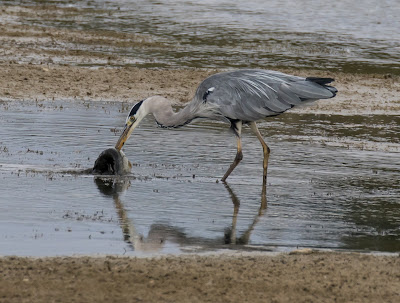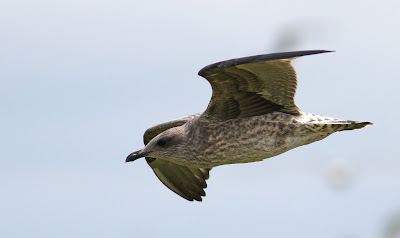Hello
A cool start to what turned out to be a warm and sunny and very enjoyable day. Ringers operating out of Stortons Gravel Pits under the leadership of John Woollett enjoyed a catch of warblers (nine Reed Warblers, six Sedge Warblers, six Blackcaps, five Whitethroats, a Willow Warbler) and resident birds, the highlight being an adult Grasshopper Warbler.
Dave Francis and Jacob Spinks were managing the Constant Effort Site nets at Pitsford Reservoir this morning, and although the catch was relatively small there was a good mixture of warblers and common birds. The highlight here was the capture and processing of a Yellow Wagtail, a species only caught in very low numbers locally. A Green Sandpiper and an adult Yellow-legged Gull were on the bund in front of the New James Fisher Hide
The Willow Warbler is a much scarcer breeding bird in Northants these days; it seems that the bulk of the population now breeds in Scotland, perhaps another example of global warming. Harrington Airfield has a small number of pairs breeding in the scrubbed up area, and these bushes also attract Willow Warblers moving through too. Five birds were caught there this morning (including a bird first ringed there in April 2015) together with a couple of Whitethroats, two Yellowhammers, a Linnet and two Green Woodpeckers in a small catch of birds. Other birds noted included a Golden Plover, a couple of Grey Partridge and a calling Raven.
Four Ravens were in the Brampton Valley below Hanging Houghton this morning and birds visible from the Sailing Club at Pitsford Reservoir this evening included the pair of Ruddy Shelduck, a juvenile Mediterranean Gull, an adult Yellow-legged Gull, a Greenshank, three Green Sandpipers and three Ringed Plovers.
Regards
Neil M
A cool start to what turned out to be a warm and sunny and very enjoyable day. Ringers operating out of Stortons Gravel Pits under the leadership of John Woollett enjoyed a catch of warblers (nine Reed Warblers, six Sedge Warblers, six Blackcaps, five Whitethroats, a Willow Warbler) and resident birds, the highlight being an adult Grasshopper Warbler.
Dave Francis and Jacob Spinks were managing the Constant Effort Site nets at Pitsford Reservoir this morning, and although the catch was relatively small there was a good mixture of warblers and common birds. The highlight here was the capture and processing of a Yellow Wagtail, a species only caught in very low numbers locally. A Green Sandpiper and an adult Yellow-legged Gull were on the bund in front of the New James Fisher Hide
The Willow Warbler is a much scarcer breeding bird in Northants these days; it seems that the bulk of the population now breeds in Scotland, perhaps another example of global warming. Harrington Airfield has a small number of pairs breeding in the scrubbed up area, and these bushes also attract Willow Warblers moving through too. Five birds were caught there this morning (including a bird first ringed there in April 2015) together with a couple of Whitethroats, two Yellowhammers, a Linnet and two Green Woodpeckers in a small catch of birds. Other birds noted included a Golden Plover, a couple of Grey Partridge and a calling Raven.
Four Ravens were in the Brampton Valley below Hanging Houghton this morning and birds visible from the Sailing Club at Pitsford Reservoir this evening included the pair of Ruddy Shelduck, a juvenile Mediterranean Gull, an adult Yellow-legged Gull, a Greenshank, three Green Sandpipers and three Ringed Plovers.
Regards
Neil M
 |
| A series of images from Jacob Spinks after his wildlife foray in Pembrokeshire. Images depict a Kestrel, a Gannet and an Emerald Damselfly |















































